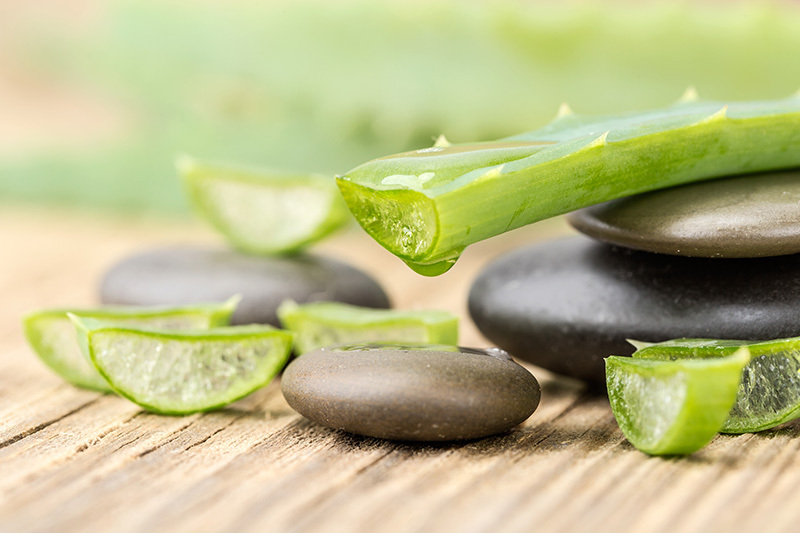Best Practices for Maintaining the Health of Poinsettias Indoors
Posted on 01/09/2025
Best Practices for Maintaining the Health of Poinsettias Indoors
Poinsettias (Euphorbia pulcherrima) have become the quintessential plant for festive indoor decorations, especially during the holiday season. Their dazzling red, white, and pink bracts and lush green foliage add charm to any room. However, maintaining vibrant and healthy poinsettias indoors requires attention and the application of wise plant care techniques. Whether you're a novice or seasoned gardener, understanding best practices for caring for poinsettias indoors ensures their beauty endures for weeks or even months.
Why Healthy Poinsettias Matter
Well-maintained indoor poinsettias thrive far longer and look more striking. Healthy plants not only look better but also resist pests and diseases more effectively. Investing some time in their care guarantees they remain the showstopper in your home decor. In this comprehensive guide, you will discover expert-endorsed tips to maximize the health and lifespan of your poinsettia plants indoors.
Table of Contents
- Optimal Placement for Indoor Poinsettias
- Lighting Requirements for Healthy Growth
- Proper Watering Techniques
- The Importance of Temperature and Humidity
- Fertilization and Nutrition
- Pruning and Pinching: Keeping Poinsettias Bushy
- Pest and Disease Management
- Post-Season Care to Re-bloom Next Year
- Troubleshooting Common Indoor Poinsettia Issues
- Conclusion: Cultivating Healthy Poinsettias Indoors
Optimal Placement for Indoor Poinsettias
Choosing the right spot for your poinsettia indoors is critical. These plants prefer a stable environment where temperature, airflow, and light are consistent.
- Keep away from drafts: Avoid placing poinsettias near doors, fireplaces, or windows that are frequently opened.
- Steer clear of heat sources: Heating vents, radiators, and appliances emitting hot air can dry out the plant quickly.
- Good air circulation: Gentle air movement helps prevent fungal problems. However, do not put the plant directly in the path of forced air or cold drafts.
Tip: Place your poinsettias on a decorative tray or plant stand for a stylish touch while keeping them away from any sudden temperature changes.
Lighting Requirements for Healthy Growth
Poinsettias require bright, indirect light to maintain their rich bract color and dense foliage. Too much direct sunlight may scorch their leaves, while insufficient light leads to leaf drop and dull colors.
- Ideal window: An east- or west-facing window provides sufficient light without excessive heat.
- Supplemental lighting: If natural light is limited, use fluorescent grow lights for 6-8 hours daily.
- Rotate the plant weekly so all sides receive equal light exposure and the plant grows evenly.
Proper Watering Techniques for Indoor Poinsettias
Overwatering and underwatering are the most common reasons poinsettias struggle indoors. The goal is to maintain evenly moist soil without waterlogging.
- Check soil moisture: Insert your finger about 1 inch into the soil. Water when the top layer feels dry.
- Drainage is crucial: Ensure your container has drainage holes. Empty the saucer after watering so roots are not sitting in water.
- Use room-temperature water to avoid shocking the roots.
- Water less frequently in lower light or cooler indoor temperatures.
Avoid common mistakes: Do not let poinsettias wilt, but also avoid a soggy potting mix, which invites root rot and fungal issues.
The Importance of Temperature and Humidity
Maintaining proper temperature and humidity indoors is vital for poinsettias' health.
- Ideal temperature range: 65-70?F (18-21?C) during the day and no lower than 60?F (15?C) at night.
- Avoid drastic temperature fluctuations, which can cause bracts and leaves to fall.
- Humidity levels: Poinsettias prefer moderate humidity (40-60%). In dry, heated rooms, use a humidity tray or a humidifier.
Pro tip: Grouping poinsettias with other plants improves local humidity and creates a healthier microenvironment.
Fertilization and Nutrition for Indoor Poinsettias
Poinsettias do not need heavy feeding during their display period, but regular fertilization helps maintain vigor.
- When to feed: Begin fertilizing once your poinsettias have finished blooming or if you plan to keep them for next year.
- Use a well-balanced, water-soluble fertilizer every 4-6 weeks. Dilute to half the recommended strength to avoid fertilizer burn.
- Feed only when the soil is moist to prevent root damage.
Note: Avoid high nitrogen fertilizers, as they promote excessive leafy growth at the expense of colorful bracts.
Pruning and Pinching: Keeping Poinsettias Bushy
Regular pruning or pinching secures a fuller, more compact poinsettia plant, ideal for indoor display.
- Pinch back new growth in early spring or after blooming to encourage branching.
- Remove faded or damaged leaves and bracts regularly to maintain appearance and plant health.
- Always sterilize pruning shears to prevent spreading diseases.
Pinching every 4-6 weeks until midsummer helps establish a bushy, attractive shape. Avoid aggressive pruning as the plant approaches the blooming season.
Pest and Disease Management
Indoor poinsettias are vulnerable to several pests and diseases. Early detection and proactive management are the best defense.
- Common pests: Whiteflies, spider mites, aphids, and fungus gnats.
- Prevention: Inspect plants before purchase and isolate new plants for 1-2 weeks.
- Use insecticidal soap or neem oil sprays for early-stage infestations.
- Keep foliage dry and avoid overwatering to minimize fungal diseases like powdery mildew or root rot.
Monitor your plants weekly for any signs of yellowing leaves, stunted growth, or white webbing, which indicate trouble.
Post-Season Care to Re-bloom Next Year
With dedicated post-season care, your poinsettia can return to bloom beautifully next winter.
- After the holidays: Reduce watering and allow the plant to rest in a cool, bright spot.
- Spring: Prune back to 5-6 inches and repot if roots are crowded.
- Summer care: Move outdoors after all danger of frost and maintain consistent moisture. Fertilize as above.
- Early fall: Bring indoors before cold nights. Starting in late September, provide 14-16 hours of complete darkness each night for 8-10 weeks to initiate bract color change.
- Return to normal light conditions in late November for traditional holiday blooms.
Note: Consistency is key during the dark period if you want vivid bracts for Christmas.
Troubleshooting Common Indoor Poinsettia Issues
Maintaining healthy indoor poinsettias sometimes requires quick problem-solving.
- Leaf Drop: Usually triggered by temperature shifts, drafts, or extremes in watering.
- Wilting: Check soil for both dryness and waterlogging; adjust watering accordingly.
- Color fade or pale leaves: May indicate insufficient light or nutrients.
- Sticky leaves or white residue: Watch for pests like whiteflies. Treat promptly with insecticidal soap.
Regular inspection and prompt adjustments keep your indoor poinsettias thriving.
Conclusion: Cultivating Healthy Poinsettias Indoors
Maintaining the health of poinsettias indoors is rewarding and achievable with the right practices. Remember to provide bright indirect light, moderate watering, consistent temperature, and occasional feeding. Prune and monitor for common pests to enjoy a vibrant display of color year-round. With a bit of care, your indoor poinsettia can remain a star feature in your home and even rebloom for many holidays to come.
Follow these best practices for indoor poinsettia care to ensure your plants stay brilliantly healthy, charming guests and infusing your interiors with festive cheer all season long.
Related topics:
- How to keep poinsettia plants alive indoors
- Poinsettia care tips for beginners
- Indoor plant health management
- Best way to water indoor poinsettias
- Poinsettia reblooming techniques


Latest Posts
Work-Friendly Green: 10 Best Office Plants for Hassle-Free Upkeep
Dig Into the World of Tulips With These 7 Incredible and Lesser-Known Facts
Transform Your Orchid Care Routine With These Pro Tips






